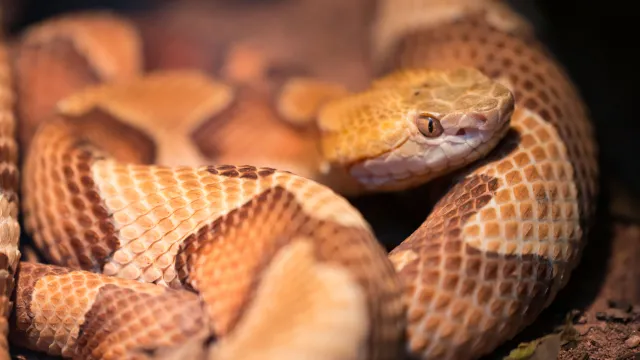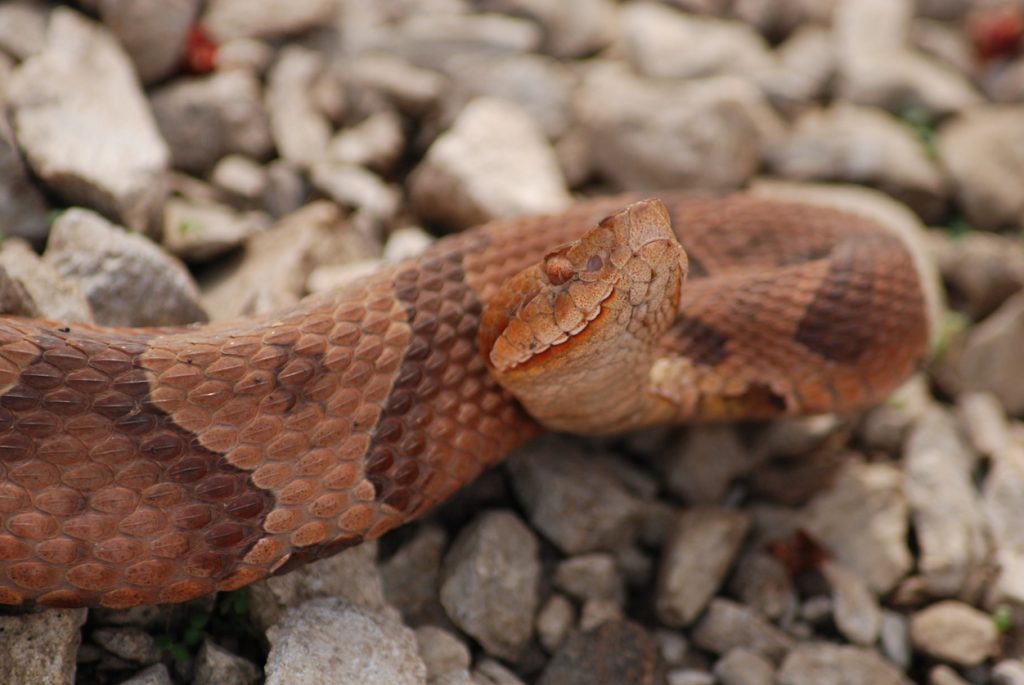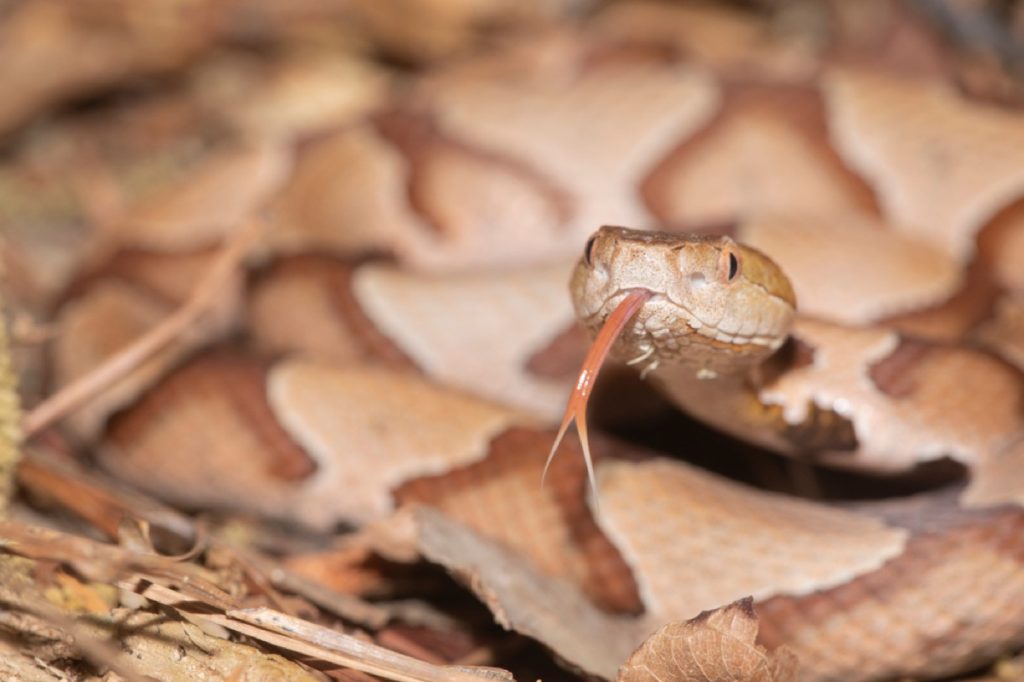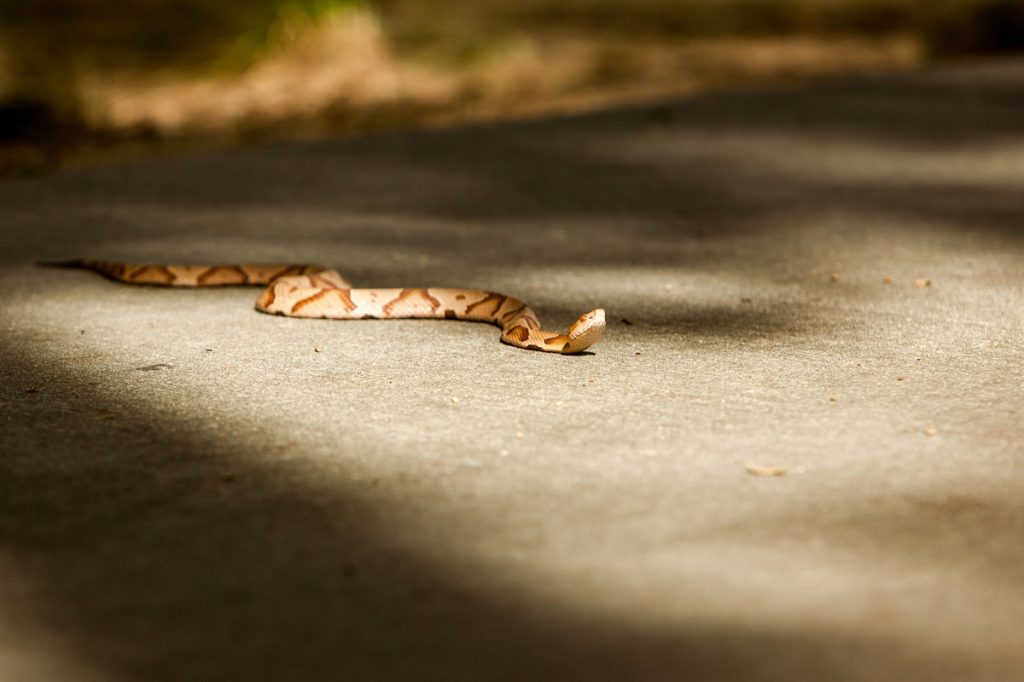Multiple Venomous Snakes Found in U.S. Homes—Here’s Where They Were Hiding

While you might expect to spot a venomous snake outdoors or on your property occasionally, no one wants to come across one inside their home without warning. Unfortunately, the crafty reptiles can be good at making their way indoors and taking people by surprise—while others can already be there when you move in. And now, more people have reported that multiple venomous snakes were found in their homes. Read on to see where they were hiding and how you can be on the lookout for any potential intruders.
READ THIS NEXT: Invasive 200-Pound Pythons Are Spreading in the U.S.—And Eradication “Is Not Possible”.
One Virginia homeowner found a large copperhead inside their house.

Even the smallest of homes can have nooks and crannies that can be hard to keep free of pests or other critters, whether it’s a drafty attic or damp basement. And in one recent case, Virginia homeowners had to bring in professionals to take care of a snake that made its way into another hard-to-reach area of their house, Newsweek reports.
In a May 12 Facebook post, pest and animal removal company Virginia Wildlife Management and Control (VWMC) said they had been called to a house in the town of Mechanicsville to deal with a copperhead snake that managed to make its way into a crawl space. The team safely captured the nearly two-foot-long reptile using special equipment to protect both the humans and the snake involved.
“We take great precautions removing [eastern copperheads] by using professional snake tongs and tall leather boots or leg protectors,” Richard Perry, a spokesperson for VWMC, told Newsweek. “The risk to humans is that they will definitely strike and induce venom if they feel threatened or provoked.”
The company pointed out that such calls were relatively common, adding that they had been called to another nearby town the previous day to remove a copperhead found on someone’s lawn. “We deal with copperheads and many other snakes on a daily basis in our line of work,” Perry told the magazine.
Another pair of snakes was found hiding in a surprising place at a home in Georgia.

Another homeowner in Georgia also got a bit of a surprise when he discovered a pair of venomous copperheads sneaking about his home on May 11, Newsweek reports. But in this case, the reptiles were found hiding in and around pairs of shoes stored by the garage entry door.
“I walked over, assuming this to be a garter or rat snake,” Josh Dameron, a neighbor who helped trap and safely relocate the snakes, told Newsweek. “When he opened the door, he saw them both sitting right on the doorsteps.”
Dameron says the reptiles managed to make their way indoors after the homeowner moved a trash can out to the street. “The snakes were surprisingly nonaggressive but fairly large,” he told Newsweek. “Both over two feet.”
RELATED: For more up-to-date information, sign up for our daily newsletter.
Copperheads can enter homes looking to stay cool or catch a meal.

While they’re not aggressive by nature, copperheads are responsible for more venomous snake bites in the U.S. than any other species due to their expansive habitat and ability to adapt to human encroachment, according to Live Science. But while they’re likely to hide in leaf or wood piles outdoors, they can still be enticed indoors—especially if these hiding spaces are up against or close to your home, local Charlotte NBC affiliate WCNC reported.
This can also be a problem during the warmer months. As cold-blooded animals, snakes are sensitive to the hot weather of summer and will often seek out a cool place in the shade in and around houses to help maintain their body temperature, according to Florida-based pest services company Animal Control Solutions.
However, they can also go indoors in search of a meal if a home is infested with rodents or other small animals that make up a copperhead’s diet. According to pest control company Orkin, it’s best to manage any pest problems right away and to cover up any outdoor vents or piping with screens to prevent either of them from making their way inside.
Here’s what you should do if a copperhead snake ever bites you.

Fortunately, run-ins with copperheads can largely be avoided by staying aware of your surroundings and by not trying to kill or capture the reptiles that have made their way into your house. “If they are left alone, they aren’t dangerous at all,” Jeff Edwards, executive director and CEO of the River Parks Authority in Oklahoma, told Newsweek. “They are venomous, but their venom is considered mild, and 99.99 percent of bite victims survive.”
If a snake has happened to make its way inside your home, calling a professional can help avoid any potential injuries that come along with trying to trap the reptile yourself. But if you are bitten, it’s best to seek medical treatment immediately.
“Antivenom is not always required to treat a copperhead bite, but it is important to be evaluated by a physician with expertise in treating venomous snakebites in order to make that determination,” Eugenia Quackenbush, MD, an emergency physician with UNC Medical Center, told The News & Observer.